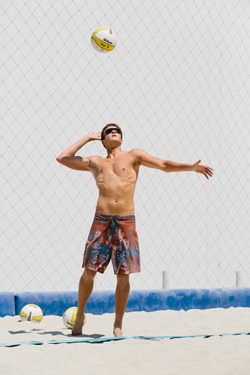Baseball Strength and Conditioning...The Do's and Dont's
Baseball is not an endurance sport. I have been asked 4 times in the last 12 hours whether baseball players should run cross country to stay in shape for baseball. My answer? Absolutely not. If your goal is to get in shape for baseball, DO NOT RUN CROSS COUNTRY. Baseball is an extremely powerful sport; a 3.2 mile run does not stress the same energy system! Specificity is key! Hopefully by the end of this article, you will learn how to properly train a baseball player to drastically improve sport performance
As Physical Therapy continues to grow and become more of a necessity within the baseball world, basic strength and conditioning concepts have been swept under the carpet. It is my job as a strength and conditioning coach to train athletes to perform at their best, but also wade through piles of articles on the latest and greatest S & C research. While sifting through the pile of articles on ways to improve throwing velocity, a common theme began to show itself (one that appears to follow hand in hand with physical therapy): baseball players training for muscular endurance, i.e. 3 sets of 10-12 reps.
When looking at the results of studies, one particular researcher showed throwing velocity improved by 13.6 mph when subjects lifted loads equal to 95% of their 1 RM. Basically, these athletes worked their way up to near maximal loads with sets of 2-5 reps (almost 100%) for 10 weeks. Furthermore, athletes showed an 11.4 mph increase when lifting up to 85% of their 1 RM for 6 reps (just slightly lighter than the previous example). Studies done with lighter weights, training for muscular endurance showed only a 6.9% increase in throwing velocity. Forty years of research supports training at higher intensities are more beneficial then training at lower….
To most, sets of 10-12 seem to be ideal, you think “why does a baseball player need to train for power, don’t they throws over 100 times per game?” That is a good point; however, let’s think more about the physiological demands of the sports. When including each phase of the throwing motion, the ball is released between 1.5 and 2.5 seconds after the throwing motion is started. The amount of time a player takes to release the ball depends on their fielding position; catchers appearing to have the shortest release time.
When it comes to designing and selecting exercises for your baseball players, let alone athletes of any sport, the most important concept to keep in mind is specificity. In its simplest definition specificity is choosing exercises that are similar metabolically to the sport of the athlete. In terms of baseball, the highest, if not the entire metabolic demand, is within the ATP-CP energy system, also known as creatine phosphate energy system. This energy system is active within the first 10 to 30 seconds of exercise. This is pretty dang similar to baseball when you think about how often a player is putting out 100% effort for more than 3 or 4 seconds without given a chance to fully recover between his or her next athletic movement. It is important to continually work with your baseball players within this 10 to 30 second time zone. Think about this; when is the last time you heard of an Olympic shot putter going for a mile run as part of his training to get ready for his season?
As strength and conditioning coaches, it is our job to maximize the talents within our athletes. Most coaches have an hour once or twice a week to work with their athletes. I believe it is up to us to make this count for our athletes, and include exercises that are more specific to their sport. This does not say there is no need for training for muscular endurance, considering the amount of stress throwing causes, and the subsequent muscular imbalances that follow. One way to correct these imbalances is often through shoulder prehab exercises, but this will be discussed in a future article.
While working with a high school baseball team in the San Diego area I began to implement heavy resistance training with my athletes. The results were better than I expected. Sixty yard sprint times dropped drastically, kids were throwing harder, time around the bases decreased considerably, and there was lots of self proclaimed first step power. This style of training did come with moans and groans from parents saying that baseball players didn’t need to lift heavy. I constantly heard “baseball players don’t need to lift, my kids will get hurt”. But, by the end of the season any complaints were silenced and praises were given all around. This baseball team had the best season in the history of the school; with one athlete being named league MVP, and another being heavily recruited by Stanford.
So as school starts up again and young baseball players are deciding on what sport they should play this upcoming year it is important to remember specificity!

